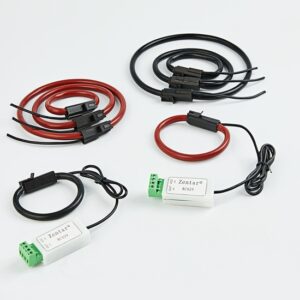The Critical Impact of Open Circuit Conditions in Current Transformers
Current transformers (CTs) are indispensable in the measurement and monitoring of electrical currents in various applications. Understanding the impact of open circuit conditions on these devices is crucial for maintaining safety and reliability in electrical systems.
How Current Transformers Operate
A current transformer typically features fewer turns in the primary winding and is connected in series to the circuit being tested. The secondary winding, which has more turns, is used in conjunction with the current coils of measuring instruments and relays. Under normal conditions, the CT operates close to a short circuit, with the secondary current’s magnitude directly influenced by the primary current. This delicate balance ensures that the magnetic potentials generated by both currents offset each other.
The Dangers of Open Circuit Conditions in CTs
If the secondary circuit of a CT becomes open, its impedance turns infinite, making the secondary current zero and disrupting the balance of magnetic potentials. This results in all the primary current acting on the excitation and leading to severe saturation of the iron core. The consequences of such magnetic saturation are dire:
- Increased Iron Loss and Overheating: The CT generates excessive heat, which can damage the insulation of the coil and even burn it.
- Residual Magnetism: This increases transformer errors and can affect the accuracy and reliability of the CT.
- Distorted Magnetic Flux Waves: Normally a sine wave, the magnetic flux becomes trapezoidal, inducing high voltages in the secondary coil that can reach thousands of volts. This not only poses a risk to the equipment but also endangers personnel.
Identifying Open Circuit Failures
Open circuit conditions can be elusive and hard to detect, particularly when the primary load is low and the secondary isn’t actively working. However, certain symptoms can help pinpoint such failures:
- Instrument Anomalies: Abnormal readings such as inconsistent or zero values on meters.
- Physical Symptoms: Noiseless operation, uneven vibrations, or visible smoke are telltale signs, though less noticeable under light loads.
- Visible Electrical Discharge: Sparking or arcing at the CT’s secondary circuit terminals indicates potential issues.
- Equipment Malfunctions: Unexpected operations or failures in systems like relays can be clues to underlying open circuit issues.
- Damage to Connected Devices: Smoke or burnout in devices like watt-hour meters or transmitters can indicate severe problems, often linked to both CT and potential transformer (PT) secondary circuits.
Handling and Preventing Open Circuit Issues
Proper management of CT open circuit conditions involves several critical steps:
- Safety First: Always use insulated tools, wear insulated gloves, and stand on an insulating pad during inspections or repairs.
- Load Management: Reduce the primary load current to lower the risk of voltage spikes.
- Immediate Troubleshooting: For obvious faults, such as loose connections or bad contacts, immediate action can prevent more serious issues.
- Systematic Testing: Employ short-circuit tests at the nearest test terminal to locate the exact point of failure, adjusting the testing points progressively to isolate the issue.
- Reporting and Corrective Measures: Any unresolved issues or complicated faults inside devices like relays should be reported for further action.
By implementing these practices and understanding the operational dynamics of current transformers, engineers and technicians can ensure the stability and safety of electrical systems.




